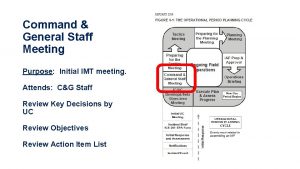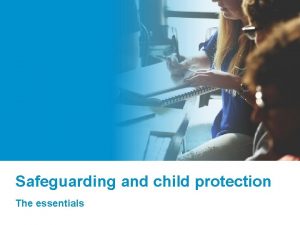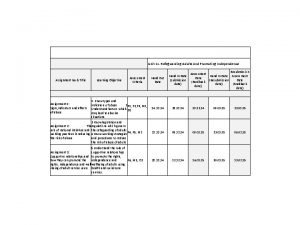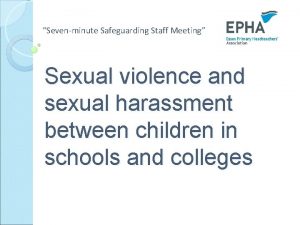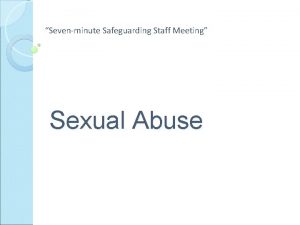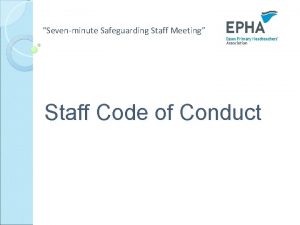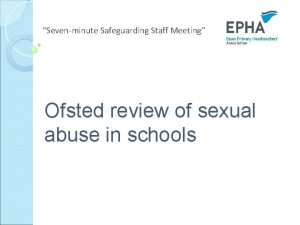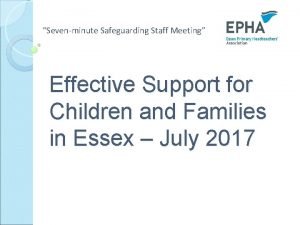Sevenminute Safeguarding Staff Meeting Sexual violence and sexual







- Slides: 7

“Seven-minute Safeguarding Staff Meeting” Sexual violence and sexual harassment between children in schools and colleges

The Department for Education (Df. E) first published guidance on Sexual Violence and Sexual Harassment between children in schools and colleges, in December 2017. A summary is now included within Keeping Children Safe in Education which means that schools and colleges in England must have regard to it when carrying out their duties to safeguard and promote the welfare of children. Its focus is child on child sexual violence and sexual harassment at schools and colleges.

The evidence Research and crime statistics suggest that anywhere from one-fifth to two-thirds of sexual abuse is committed by other children and young people. Over a third (37%) of female students and 6% of male students at mixed-sex schools have personally experienced some form of sexual harassment at school. In 2016/17 the NSPCC Childline service provided over 3000 counselling sessions to children and young people concerned about being sexually assaulted by their peers.

What do we mean by sexual violence and sexual harassment? Sexual violence refers to sexual offences under the Sexual Offences Act 2003, including rape, assault by penetration and sexual assault. Sexual harassment means ‘unwanted conduct of a sexual nature’ that can occur online and offline. When the guidance references sexual harassment, it does so in the context of child on child sexual harassment. Sexual harassment is likely to: violate a child’s dignity, and/or make them feel intimidated, degraded or humiliated and/or create a hostile, offensive or sexualised environment.

2 minute discussion Are you concerned about sexual violence and sexual harassment (between children) in your school? How should you respond if you are concerned or receive a report about a child in relation to sexual violence or harassment?

The response to a report of sexual violence or sexual harassment The initial response to a report from a child is important. It is essential that all victims are reassured that they are being taken seriously and that they will be supported and kept safe. If staff have a concern about a child, or a child makes a report to them, they should act immediately. Staff (and volunteers) should follow their own organisation’s child protection policy and speak to the designated safeguarding lead (or deputy).

Additional guidance and further reading Keeping children safe in education –statutory guidance for schools and colleges (September 2020) Sexual violence and sexual harassment between children in schools and colleges (May 2018) Exclusion from maintained schools, academies and pupil referral units in England (September 2017) Hackett, S. (2014) Children and young people with harmful sexual behaviours. Andrew Hall – video about the Df. E guidance https: //www. safeguardinginschools. co. uk/sexual-violence-sexual-harassment-children-schoolscolleges-dfe-2017/ National Society for the Prevention of Cruelty to Children https: //www. nspcc. org. uk/preventing-abuse/child-abuse-and-neglect/child-sexual-abuse/ The NSPCC provides a helpline for professionals at 0808 800 5000 and help@nspcc. org. uk.
